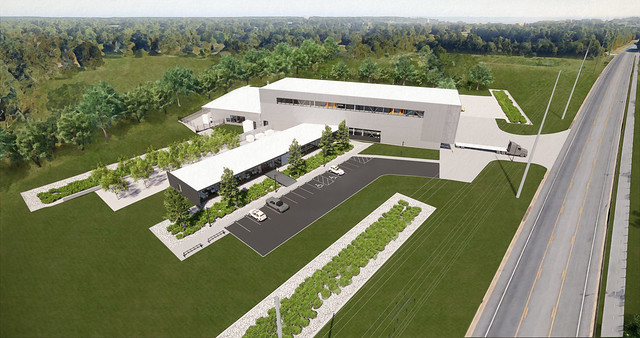Auburn University is taking another giant step as the Southeast’s leader in structural engineering research and instruction through the construction of a $22 million Advanced Structural Testing Laboratory.
“For years, we’ve had an excellent structural testing lab that’s part of the Harbert Engineering Center. But, over time, we’ve kind of outgrown that lab,” said Steve Taylor, associate dean for research in the Samuel Ginn College of Engineering. “We’ve come to the point that we needed to replace it, based on the campus around it, the surroundings that have grown around it and to give our students and faculty the capability to move farther and test much larger components.”
The 41,500-square-foot facility will include a high bay laboratory with specially engineered floors and walls capable of handling extreme structural testing loads; a 4,700-cubic-foot geotechnical test chamber; a concrete materials research and testing laboratory; a wind testing facility; and faculty and graduate student spaces.
“One of the great aspects of the lab is there will be so many things close together on one small research campus,” said Robbie Barnes, associate professor of civil engineering. “The capacity of the building will be much larger in terms of loads we can apply and the size of the structures we can apply loads to. We can look at multi-story frames, the interaction between foundations and the structures above, and we’ll be able to load structures faster.”
The geotechnical test chamber is a unique feature — one of the few across the nation included in a university laboratory.
“We’re going to be able to conduct geotechnical tests that we have only been able to do in the field up until now on things like foundations, anchorages and towers,” said J. Brian Anderson, associate professor of civil engineering. “It is a very exciting opportunity.”
In addition, the wind testing facility will allow replication of the dynamic wind loads induced by hurricanes, tornadoes and other extreme wind events on large-scale specimens.
“One thing we’ll able to do in this much larger and more modern facility is really look at trying to decrease the impact of natural hazards, keep natural hazards from becoming natural disasters, increasing the lifespan of our structures, increasing the life safety of our structures and decreasing costs to taxpayers,” Barnes said.
The laboratory will be located near Auburn University Facilities Management offices and the intersection of Shug Jordan Parkway and West Samford Avenue.
“Auburn is at the forefront of engineering education, and by providing our students opportunities for experiential learning, we’re ensuring our graduates emerge as industry leaders,” said Christopher B. Roberts, dean of engineering. “This outstanding facility enables our researchers to deliver innovative solutions to pressing industry demands — something Auburn does best.”
The construction of the new facility will allow the Samuel Ginn College of Engineering to repurpose the current structural laboratory space in the Harbert Engineering Center for other academic and research programs.
“When you combine the strong floor and strong wall with the geotechnical testing capability and all the other materials testing capabilities, we think this will be one of the best laboratories in the country — if not the best,” Taylor said. “If I’m a civil engineering student who wants to be a structural engineer, this is going to be one of the best places to go to school in the nation.”
